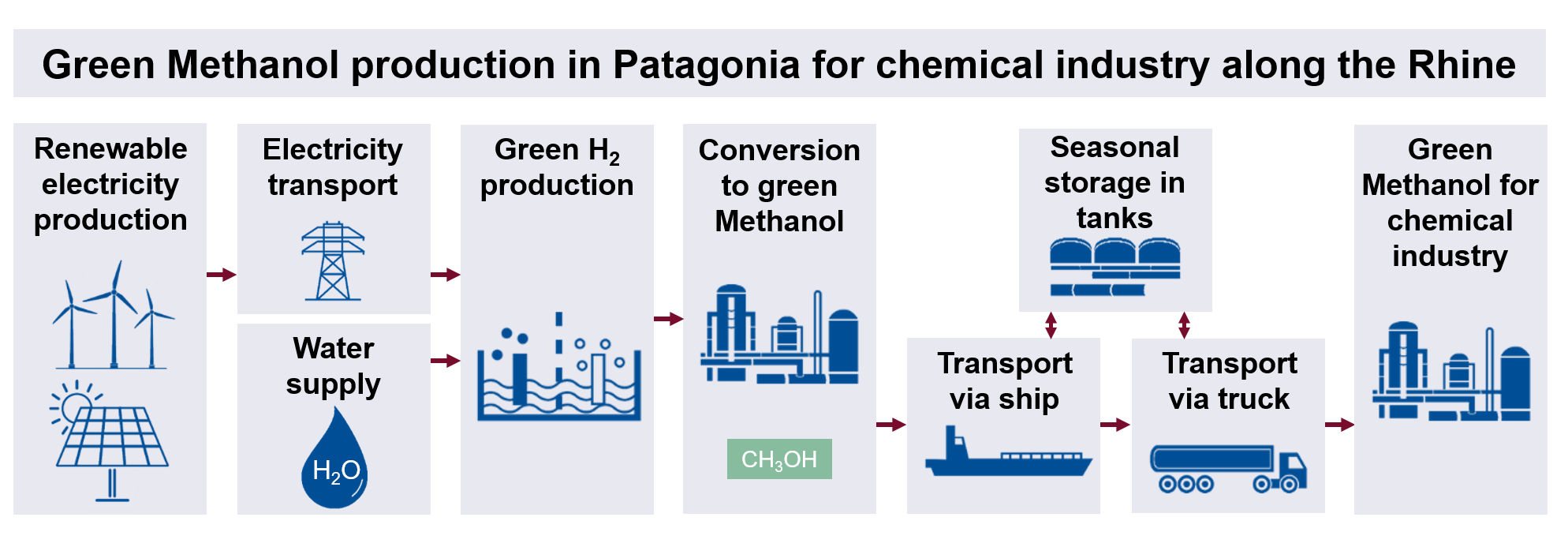3.4 Hydrogen Supply Chains
4. Example 3: Transport of green methanol

Due to its good transport properties, green methanol may also be imported from very distant regions in the future. Since methanol, unlike liquid hydrogen, can be transported by ship almost without losses, the transport costs barely contribute to the overall costs, irrespective of the distance to be covered. For the supply chain illustrated here, Patagonia was chosen as an exemplary export region, where green hydrogen and its derivatives can potentially be produced at low cost due to very favourable wind conditions.
In the schematic representation of the supply chain, the supply of carbon dioxide for methanol synthesis was neglected for reasons of clarity. However, the availability of green carbon dioxide may be an important criterion for the selection of sites for the production of green methanol in the future. It is conceivable, for example, that regions that have a large biomass potential - and thus at the same time a high availability of green carbon dioxide - have decisive location advantages with regard to the production of green methanol compared to regions without such a biomass potential.